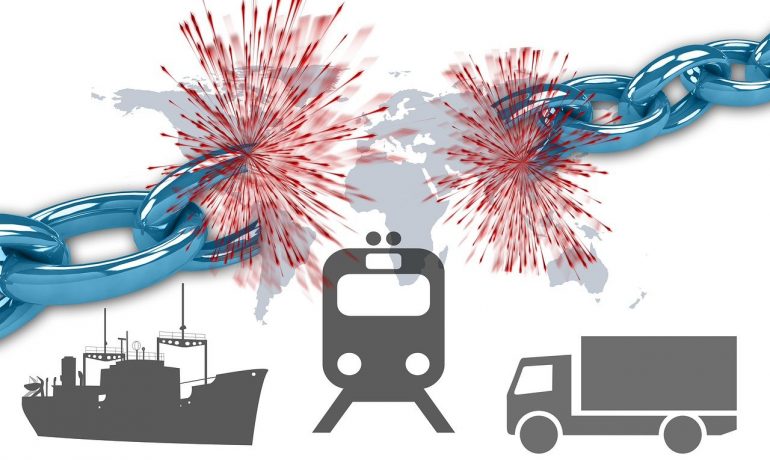We have seen how the Russian invasion of Ukraine caused a spike in oil prices and a rapid re-alignment of European energy supply chains. In what other ways will geo-political uncertainty and climate change challenge commodity prices and supply chains and how should you plan for them?
We’ve also seen how Russia’s invasion hit the wheat market. In February 2022, its navy blockaded the country’s Black Sea ports, trapping 20 million of tonnes of grain meant for export, causing world food prices to soar and threatening to create shortages – even famine – in Middle Eastern and African countries. Ukraine had supplied 725,000 tonnes of grain to the World Food Programme (WFP), which was sent as humanitarian aid to Afghanistan, Djibouti, Ethiopia, Kenya, Somalia, Sudan and Yemen.
After a short-lived deal brokered by Turkey that allowed some wheat to reach its markets through a corridor in the Black Sea, Ukraine is now having to find alternative routes. These include taking wheat by canal into Romania and then sending ships that stay within territorial waters down to the Bosphorus. Other more expensive land routes have opened up. However, these have also caused tensions with neighbours in Poland, Hungary and Slovakia who banned imports of Ukrainian grain because of the impacts on domestic markets.
A less well-known impact has been on the supply of sunflower oil. Since 2012, Ukraine has been the world’s leading exporter of sunflower oil with a 47% share of global sunflower oil exports in 2021. Sunflower oil shortages also drove up prices of substitutes such as palm, rapeseed and soya bean oil.
Beyond Ukraine, climate change is hitting other food markets.
In July, India suffered late, heavy monsoon rain which destroyed rice crops and threatened inflation. In response the Government ordered a halt to exports of non-Basmati rice (its largest rice export category) halving shipments and triggering fears of further inflation on global food markets. Prices of rice exported from Vietnam and Thailand soared to their highest in more than a decade. Additionally, potential crop losses from the El Nino dry weather conditions I South-East Asia are adding further pressures.
Other cooking oil supplies have been hit too. In 2021 farmers in Canada, the biggest producer and exporter of rapeseed, had a disastrous growing season after temperatures soared to almost 50C. Soya bean oil prices soared after Brazil, Argentina, and Paraguay – which account for more than 50% of world supply – were affected by severe drought. Wildfires, drought and soaring summer temperatures in the Mediterranean have cut olive oil production – Spain alone produces half of the world’s supply of olive oil.
Climate change also can exacerbate plant and animal disease. Bird flu in South Africa is hitting chicken and egg supplies (which came first?) with 20% to 30% of the flocks being culled. In China, African swine fever is spreading rapidly over large distances and other countries in the region are at risk. China consumes far more pork than any other country, accounting for 70 per cent of all meat eaten in the country.
The UK imports 46 percent of its food, primarily from Europe, so is particularly vulnerable to supply chain shocks.
Looking beyond food, there are several key commodities the whole world depends on. In his book Material World (extracts from which were broadcast on Radio 4 recently), Ed Conway describes our reliance on sand, salt, iron and copper, oil and gas, and increasingly lithium.
Sand is particularly interesting. As a vital element in glass and silicon chips, it shapes economies -and again China dominates world production and is looking to build self-sufficiency in semi-conductors. Currently, Taiwanese companies produce 68% of the world’s semi-conductors, and 90% of those used in AI and quantum computer applications. This is clearly a geo-political risk as China has already demonstrated it can blockade Taiwan, even if a full-on assault may be challenging.
Salt is an essential element of the human diet and is a key feedstock in the chemical industry. It has been the subject of state monopolies (notably in China and the British Raj) for centuries. The word ‘salary’ comes from Latin for salt, hence the term “worth one’s salt” when referring to someone’s value. Production is widespread so alternative sources are usually available, but salt produced by evaporating sea-water (solar salt) is vulnerable to bad weather. China is the world’s leading producer with around 25% of global production.
Iron and steel also underpin economies around the world. Australia has more of the world’s mineable iron ore than any other country, more than twice that of Brazil in second position.
Copper enabled the revolution of electricity distribution, without which a modern economy cannot survive. Now, as we eliminate fossil fuels from our energy and transport systems, copper becomes ever more important. An electric car requires three or four times the amount of copper as a petrol powered one. More copper mining will challenge environmental limits, and some countries are already looking to impose mining constraint. A third of all copper mined comes from Chile.
Lithium has become an important component of battery electrolytes and electrodes, especially for electric vehicles. Debate continues about whether there will be sufficient to meet global demand. Around 70% of lithium production comes from just two countries – Australia (43%) and Chile (27%), currently relatively stable sources, though climate change could hit either badly.
Rare earth metals are critical for electric motors of hybrid and electric vehicles, generators in some wind turbines, hard disc drives, portable electronics, microphones, and speakers. Again, China is responsible for 80% of the world’s rare-earth supply and has shown it is prepared to use that leverage. Australia with 15% is the second largest producer.
Four out of five SME manufacturers in the US are concerned about the future availability of key raw materials and water, regardless of their industry. Overconsumption of water is something manufacturers said they are particularly worried about – with 71% of SME manufacturers concerned about this.
There are also critical points in the physical supply chain – the Suez and Panama canals. The Suez canal was blocked by the container ship “Ever Given” for almost a week, delaying around 400 ships, with some choosing go round via the Cape. Given the volatility of the region, it is not hard to imagine a terrorist attack closing the canal for a considerable period.
The Panama canal – which handles an estimated 5% of world trade – however is vulnerable to climate change. Drought in the region has caused the authorities to reduce the flow of ships and their tonnage and El Nino is expected to cause further pressures in 2024.
With so much uncertainty about your supply chains what should you be doing? Attempts to de-risk supply chains by re-shoring or “friend-shoring” with allies are common where possible, but come with extra costs. You can begin by Identifying substitutes (eg replacing sunflower oil with palm oil) in advance, and diversifying your range of suppliers. But the key thing is to have thought about these issues in advance.
Our Sustainable Investment Pathways project has a particular interest in supply chains, as governments, investors and companies seek to find efficient, cost-effective and net zero solutions to the movement of goods. By sea, the development of “green corridors”, shipping routes between two or more major ports, where zero-carbon emissions ships and other emissions reduction programmes are used. As the need for carbon reduction in transport and freight becomes more compelling, this in itself will have a major impact on supply chains.
A recent report by IGD suggested the main steps were:
- Strategy: examine your resilience to climate change and geo-political risks
- Risk management: establish processes for identifying and assessing risk
- Governance: have Board members oversee these risks.
We would add identifying your areas of vulnerability, possibly using scenario analysis, and building a set of contingency plans around your base case plan (an “Adaptive Plan”).
Written by Huw Williams, SAMI Principal
The views expressed are those of the author(s) and not necessarily of SAMI Consulting.
Achieve more by understanding what the future may bring. We bring skills developed over thirty years of international and national projects to create actionable, transformative strategy. Futures, foresight and scenario planning to make robust decisions in uncertain times. Find out more at www.samiconsulting.co.uk.
If you enjoyed this blog from SAMI Consulting, the home of scenario planning, please sign up for our monthly newsletter at newreader@samiconsulting.co.uk and/or browse our website at https://www.samiconsulting.co.uk
Featured image by Gerd Altmann from Pixabay


